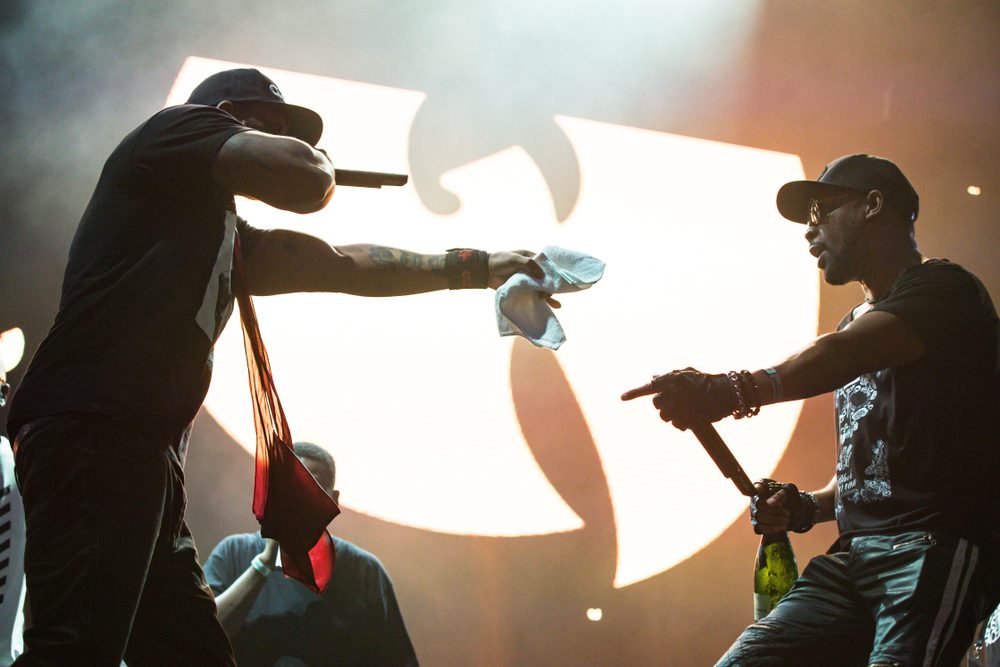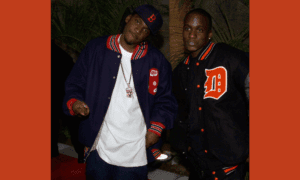
Revisiting Wu-Tang Clan’s Iron Flag: A 2001 Disappointment (Mostly)
April 15 Reflection on the Wu-Tang Clan’s Uneven Fourth Effort, Iron Flag
Wu-Tang’s Altitude Problem: The Flag Flutters
Nearly 24 years have passed since Wu-Tang Clan released Iron Flag on December 18, 2001. It was a swift follow-up to The W, arriving just over a year later, and expectations ran high. But rather than building on the momentum, Iron Flag revealed deepening fractures within the group. Missing Wu members, uneven production, and shifting creative energy made it a curious entry in the Wu catalog—less a triumph and more a document of transition.
As the album approaches its quarter-century mark, it remains a snapshot of a legendary group in flux—still powerful, still lyrical, but increasingly weighed down by internal chaos and external pressure.
Smoke Signals from a Fractured Clan
By the early 2000s, the Wu-Tang Clan was no longer operating like the tightly knit unit that had stormed hip-hop in the ’90s. Legal troubles had taken Ol’ Dirty Bastard out of the equation entirely—his unpredictable energy was sorely missed. Once closely linked with the core nine, Cappadonna was reportedly at odds with the group, though his voice still appears across the record.
Behind the boards, RZA—who had once built the Wu’s unmistakable sound from the ground up—seemed to be stepping back. The production of Iron Flag was cleaner, more polished, and more in step with the mainstream. Some of that sheen felt strategic, a nod to changing radio tastes. But for longtime fans, it moved away from the raw, sample-heavy grit that defined albums like 36 Chambers and Wu-Tang Forever.
Group tensions were increasingly visible, and the rapid turnaround between albums left little time for deep creative reflection. The result? A record that’s more reflective of label obligations and survival mode than artistic reinvention.
Learn where Wu-Tang’s albums rank among the greatest hip-hop albums of all time.
From Dusty Loops to Digital Steel: RZA and the Reinforcements
The sonic blueprint of Iron Flag differs noticeably from previous Wu releases. While RZA still produced the bulk of the record, he leaned more heavily on collaborators like True Master and Mathematics. Together, they crafted a soundscape that pulled in multiple directions—some tracks reached for cinematic bombast, others flirted with digital gloss. This was not the “C.R.E.A.M” of Wu-Tang’s crop.
Horn stabs, marching drums, and polished synths gave the album a military-industrial feel, especially on tracks like “Iron Flag” and “Rules.” There were glimpses of soul-infused Wu—“Back in the Game,” which features Ronald Isley, taps into classic R&B for an unexpectedly smooth highlight.
Still, the adventurous spirit that once defined the Clan’s sound felt restrained. Instead of pushing boundaries, Iron Flag often played it safe, settling for passable beats over the raw, unpredictable energy that once made the group unstoppable.
The Saga Continues… In Mixed Quality
“In the Hood”
Opening with haunting keys and rugged drums, the album starts strong. Ghostface Killah leads, delivering vivid street tales that anchor the group’s return. It’s a grounded, focused opener—one that promises more than the album ultimately delivers.
Explore more Ghostface:
Supreme Clientele: Ghostface’s Magnum Opus Turns 25
“Rules”
Released just months after 9/11, “Rules” is charged with political tension. Raekwon and Method Man aggressively attack the beat, and the post-crisis atmosphere lends weight to their bars. It’s one of the few tracks that feels both timely and timeless.
“Chrome Wheels”
A clear stylistic departure, this synth-heavy track embraces a digital bounce that divides listeners. Some saw it as the Wu testing new waters; others heard it as a miscalculated reach for radio relevance. Either way, it’s an outlier that never quite fits.
“Soul Power (Black Jungle)”
Built around a sample of Public Enemy’s “Black Steel in the Hour of Chaos,” this track delivers throwback funk with revolutionary undertones. The Clan taps into their roots here—musically and politically—creating a moment of defiant energy.
“Uzi (Pinky Ring)”
One of the album’s most dynamic cuts, “Uzi” is classic Wu: multiple members trading bars over a tense, fast-moving beat. The chemistry is electric, reminding listeners of what made the Clan so thrilling in the first place.
“One of These Days”
A quieter, more introspective track, “One of These Days” reflects on mortality and struggle. The somber tone and mellow beat stand out amid the album’s louder moments. It’s not flashy, but it lingers.
“Ya’ll Been Warned”
This track goes back to the Wu’s darker, dirtier roots. Gritty production and venomous verses make it one of the most authentic cuts on the record. It doesn’t innovate, but it doesn’t have to—it hits hard and fast.
“Back in the Game” (feat. Ronald Isley)
A smooth detour, this collaboration with Ronald Isley blends R&B warmth with Wu-Tang’s street-edge lyricism. It’s an unlikely match that works surprisingly well, giving the album some needed variety.
“Iron Flag”
Title tracks are meant to be statements, and this one definitely tries. Military-style horns and booming drums set a dramatic tone. But the over-the-top approach feels a bit forced—more theatrical than impactful.
“Dashing (Reasons)”
Tacked on as a bonus track, “Dashing (Reasons)” lacks urgency. It’s melodic and polished but feels more like filler than finale. Ending the album here only underlines how uneven Iron Flag is.
Miss the old Wu-Tang sound? 92.5 The Beat has more raw than a Shaolin sparring match.
Shaolin’s Slipper
In Wu-Tang’s discography, Iron Flag is often remembered as a low point. It lacks the tight focus of 36 Chambers, the ambition of Wu-Tang Forever, and the dark creativity of The W. It’s transitional, caught between eras—before the rise of solo projects like Fishscale and after the group’s golden age.
Yet it’s not without merit. A few cuts stand tall, and some verses remain among the sharpest in the Clan’s catalog. It occasionally makes up for what it lacks in cohesion in individual brilliance. But in the larger context of their legacy, Iron Flag feels like a group stretching to recapture something already slipping away.
Tattered but Still Flying
Iron Flag is far from Wu-Tang Clan’s strongest release—but it’s not a total misfire. Instead, it reflects a legendary crew dealing with time, pressure, and the weight of their legacy.
While it lacks a clear direction and suffers from internal dissonance, the album still carries fragments of the group’s raw talent and lyrical power. It’s not a return to form, but a reminder of what Wu-Tang is capable of—even when they’re far from their peak.
The flag may be tattered. The formation may be scattered. But the Wu still flew—if only just above the ground.









